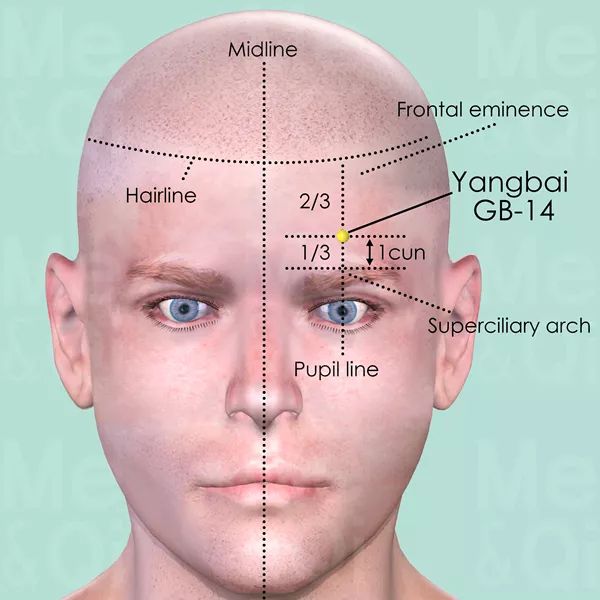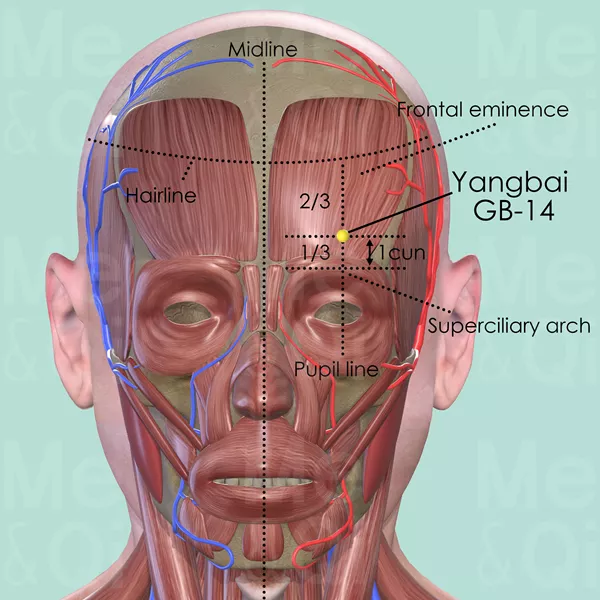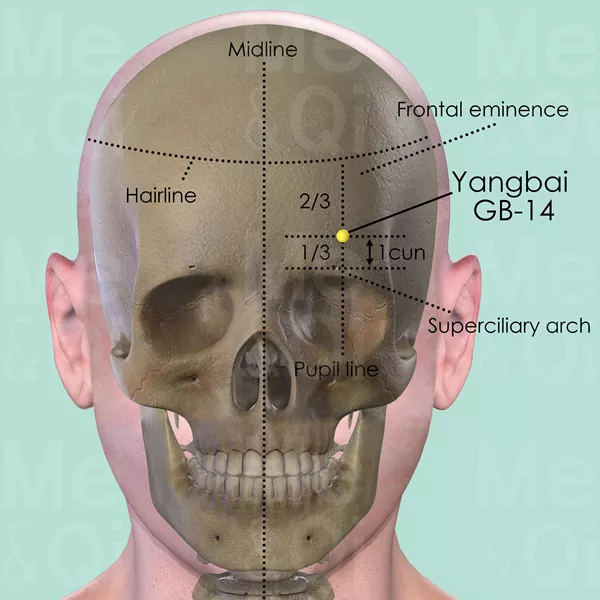Yangbai GB-14
Chinese: 阳白
Pinyin: Yáng Bái
Location
On the forehead, 1 cun above the midpoint of the eyebrow, approximately at the junction of the upper two-thirds and lower third of the vertical line draw from the anterior hairline to the eyebrow.
How to locate
With the patient looking straight ahead, Yangbai GB-14 is located on the pupil line.
On the pupil line, palpate from the anterior hairline in an inferior direction, past the frontal eminence, and locate GB-14 at the deepest point between the frontal eminence and the superciliary arch.
Divide the distance between the midpoint of the eyebrow and the anterior hairline to three.
Yangbai GB-14 is located one third of the distance or 1 cun superior to the midpoint of the eyebrow.
Main actions
- Subdues Liver Yang
- Expels Wind
- Benefits the eyes
Needling
0.3–1 cun transversely towards the center of the eyebrow or towards the site of the pain.
Or pinch the skin between the thumb and index finger so that a skin fold forms. Insert the needle subcutaneously into this fold, directing it towards the site of the pain.
Commentary for Yangbai GB-14
Yangbai GB-14 is a major local point for subduing Liver Yang Rising, characterized by headache and dizziness along the Gall Bladder Channel in the head.
Liver Yang can also trigger Interior Wind in the head. Yangbai GB-14 is able to expel this Wind from the face and head. Thus it is indicated for facial paralysis, deviation of eye and mouth, drooping or twitching of eyelid and etc.
Many neighboring points are also able to treat facial paralysis. The choice of the points should depend on the the exact place of the facial paralysis. For example, if the patients can not form ridges on the forehead by raising the eyebrows, Yangbai GB-14 should be needled.
Finally, GB-14 is able to benefit the eyes. Typical symptoms are itching of eyelid, eye pain, lacrimation on exposure to wind, diminished night vision or myopia.



